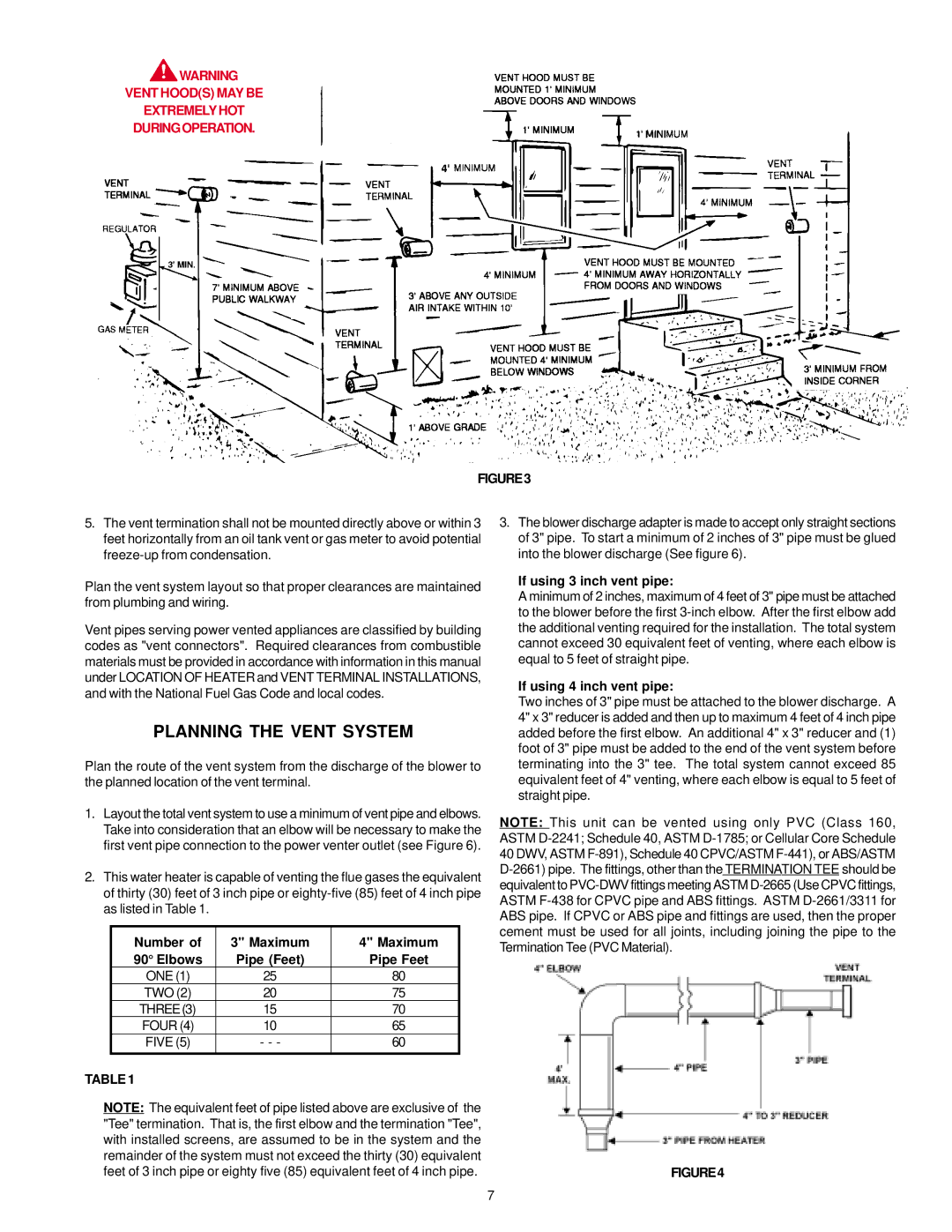
![]() WARNING
WARNING
VENT HOOD(S) MAY BE
EXTREMELY HOT
DURINGOPERATION.
FIGURE3
5.The vent termination shall not be mounted directly above or within 3 feet horizontally from an oil tank vent or gas meter to avoid potential
Plan the vent system layout so that proper clearances are maintained from plumbing and wiring.
Vent pipes serving power vented appliances are classified by building codes as "vent connectors". Required clearances from combustible materials must be provided in accordance with information in this manual under LOCATION OF HEATER and VENT TERMINAL INSTALLATIONS, and with the National Fuel Gas Code and local codes.
PLANNING THE VENT SYSTEM
Plan the route of the vent system from the discharge of the blower to the planned location of the vent terminal.
1.Layout the total vent system to use a minimum of vent pipe and elbows. Take into consideration that an elbow will be necessary to make the first vent pipe connection to the power venter outlet (see Figure 6).
2.This water heater is capable of venting the flue gases the equivalent of thirty (30) feet of 3 inch pipe or
Number of | 3" Maximum | 4" Maximum |
90° Elbows | Pipe (Feet) | Pipe Feet |
ONE (1) | 25 | 80 |
TWO (2) | 20 | 75 |
THREE(3) | 15 | 70 |
FOUR (4) | 10 | 65 |
FIVE (5) | - - - | 60 |
|
|
|
TABLE 1
NOTE: The equivalent feet of pipe listed above are exclusive of the "Tee" termination. That is, the first elbow and the termination "Tee", with installed screens, are assumed to be in the system and the remainder of the system must not exceed the thirty (30) equivalent feet of 3 inch pipe or eighty five (85) equivalent feet of 4 inch pipe.
3.The blower discharge adapter is made to accept only straight sections of 3" pipe. To start a minimum of 2 inches of 3" pipe must be glued into the blower discharge (See figure 6).
If using 3 inch vent pipe:
A minimum of 2 inches, maximum of 4 feet of 3" pipe must be attached to the blower before the first
If using 4 inch vent pipe:
Two inches of 3" pipe must be attached to the blower discharge. A 4" x 3" reducer is added and then up to maximum 4 feet of 4 inch pipe added before the first elbow. An additional 4" x 3" reducer and (1) foot of 3" pipe must be added to the end of the vent system before terminating into the 3" tee. The total system cannot exceed 85 equivalent feet of 4" venting, where each elbow is equal to 5 feet of straight pipe.
NOTE: This unit can be vented using only PVC (Class 160, ASTM
FIGURE4
7
